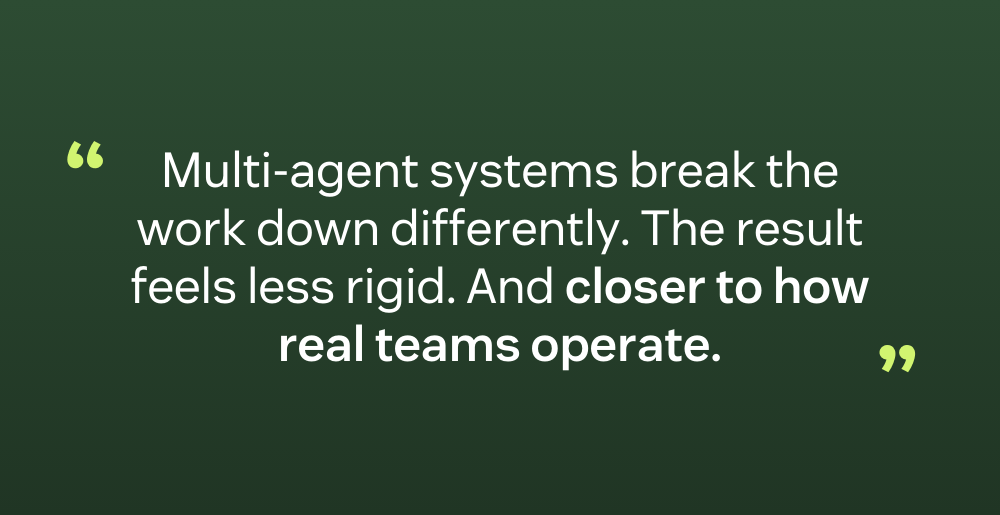3 min read
How multi-agent systems are changing customer service
AI architect Brij Pandey explains why the future of service isn't one all-powerful AI, but many that collaborate.
Brij Pandey
AI Architect
최종 업데이트: November 21, 2025
If you’ve worked in customer service for any length of time, you’ve probably noticed the same pattern. Volumes rise, expectations increase, and teams do everything they can to keep pace. Tools help, of course, but there’s always a point where the work becomes harder than it needs to be.
Over the past year, I’ve seen a noticeable shift in how companies are approaching this challenge. Instead of relying on one large AI system to do everything, many are experimenting with multi-agent systems—groups of smaller, specialized AI agents that collaborate the same way strong service teams do.
It’s a simple idea, but the impact is surprisingly meaningful.
Why multi-agent systems are gaining attention
Most support teams aren’t short on tools. What they’re short on is time, specifically, time spent repeating the same steps: reading long ticket histories, searching for the right answer, updating fields, summarizing conversations, and so on.

A single AI model can help with pieces of that, but it tends to struggle when the task shifts from one type to another. Multi-agent systems break the work down differently. Instead of one model trying to understand everything, several AI agents handle smaller, clearer parts of the task, and hand things off to human agents when needed.
The result feels less rigid. And closer to how real teams operate.
A closer look at how these systems work
Although implementations vary, the pattern usually looks something like this:
- Understanding the issue
One AI agent starts by identifying intent, sentiment, and urgency. It sets the stage so the rest of the process doesn’t start from scratch.
- Drafting a response
Another AI agent focuses entirely on retrieving or generating the right information. This is where AI tends to shine summaries, recommended replies, policy guidance, and so on.
- Reviewing and refining
A separate AI agent checks the response for clarity, tone, and accuracy. It doesn’t replace a human review where needed, but it helps maintain consistency.
- Handling workflow steps
Behind the scenes, tasks still need to happen: updating fields, triggering automations, logging details. A coordination AI agent handles those without interrupting the flow.
- Handing off to a human
When complexity increases or emotion is a factor, the system passes the conversation to a human agent with a clear summary of what has happened so far.
No single agent has to be perfect. They only need to be reliable at their specific part of the job.
Where teams see the biggest improvements
The benefits tend to show up in familiar places:
- Resolution time drops. A lot of repetitive work disappears.
- Answers feel more consistent. Because more of the process follows the same structure.
- Agents get more breathing room. Less time searching, more time helping.
- Customers repeat themselves less. Context follows them more cleanly across channels.
None of this feels flashy, more like a natural improvement to how everyday work gets done.
How this connects to Zendesk AI
Zendesk AI already handles many of the core tasks that support teams depend on: intent detection, answer suggestions, summarization, and workflow guidance. Multi-agent systems build on that foundation in a natural way.
Instead of treating AI as a single feature, they treat it as a series of coordinated steps. Teams can combine Zendesk AI capabilities with specialized agents around them, creating a workflow that adapts to each interaction without feeling mechanical.
It’s a steady move toward more flexible, more reliable automation.
What this means for the future
Customer service will always involve people—both the ones asking for help and the ones providing it. Multi-agent systems don’t replace that dynamic; they make it easier to maintain. They take on the repetitive parts so support teams can focus on moments that require judgment, empathy, or deeper context.
In many ways, this is the direction service has been heading for years. The tools are simply catching up.
